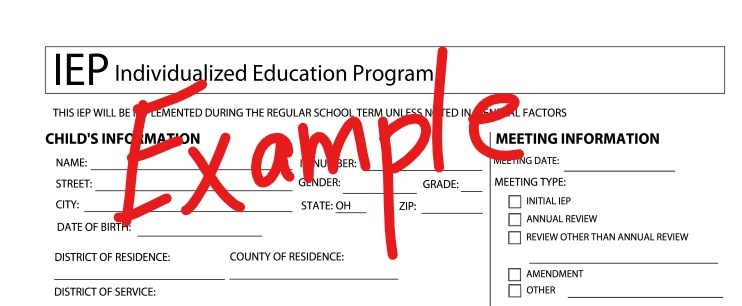
What is an Individualized Education Plan and as a parent what do I need to pay attention to?
An IEP is an individualized education plan. It is a document that summarizes the school’s team findings from the ETR, the goals the team will be working on and how your child will receive those services. The first section is just background information about your child like address, date of birth, and the school district your child attends, etc. The second section is you and your family’s goals for your child. Prior to the profile page, there is a list of instructional factors that your school team answers to determine if there are any areas they need to consider, like, does your child need specialized instruction in gym class, or do they have communication or vision barriers.
Following those questions, there is a profile with background information about your child which contains a variety of information from their strengths and weaknesses, medical background, safety concerns to consider, information obtained from their most previous evaluation including a summary and the educational needs identified in the ETR, and possible updates on their progress. It is important to note that each state may have a different form or layout and requires different information in each section.
Next is the post secondary transition section. This is only applicable to older students who are entering into their last stage of their educational career. This section focuses on the needs of the student, assessments that may be utilized and goals in the realm of secondary education or training to help them prepare for life after school. This area is commonly associated with things like work study or skills like organizing, sorting, packing.
The next section is the annual goals and is one of the 3 most important sections, in my opinion. It lists what skills the team will be working on and trying to obtain in a goal or objective format. So if your child struggles with reading, there should be a reading goal or if they struggle with writing and cutting, there should be a visual motor/fine motor or handwriting goal. Again each district, each teacher and each therapist write their goals differently. If you have a question, reach out to the person who wrote the goal to better describe what they will be working on with your child. Parents do have influence over what goals are addressed, but I would highly encourage you to take instruction from your team members as they have the education and experience of what skills need to be targeted first in order to create building blocks up to the ultimate goal or skill you would like your child to have.
After the goals, is another important section. It is the description of instruction. It details how your child will receive the services, where will the instruction will take place and for how long. It also lists any accommodations, modifications and assistive technology your child might need to be more successful at school. The goal of the school team is to provide the least number of minutes possible while still making progress. This is to prevent your child from being pulled out or removed from all the other moments that happen while at school like core instruction in math and reading, lunch, recess and specials where they get to build relationships and well rounded skills. Many parents in my experience, want their child to be seen as much as possible by therapists without taking into account what their child might miss out on or from not understanding the goal of school based therapy versus outside or private therapy.
Following the descriptions of specialized instruction is transportation. This section checks off if your child may need specialized transportation to and from school and what that transportation looks like. For example, most special buses have an extra adult, wheelchair accessible features or extra seat belt straps for increased safety.
Next is non-academics or extracurricular activities. Basically in Ohio, this section explains that your child has the same opportunity to be involved in extracurricular activities and that they are not limited because they have an IEP.
Then it is general factors or a list of questions the school will ask you to answer, like have they considered all of your questions or concerns. If they haven’t addressed something, speak up! Sometimes the teams do so many meetings with parents they can skip or move quickly through areas they know are not as important or have so much information to cover they forget something. Please ask or report any concerns you have, the team is there to help!
After the general factors is the least restrictive environment also known as the LRE. This is another important page you will want to pay attention to. This is where the team will describe in what type of setting your child will spend most of their day. It could be in the general classroom with a large group of children, pulled out to a resource room with smaller groups of children or a more intensive room with better student to teacher ratios and with more support depending on what your child needs.
Following the LRE is any accommodations for state and district wide testing that your child may need. This section lists the different kinds of tests your child will take that year and what kind of accommodations they might need to be successful like, extra time to complete the test, someone to read the questions to them or someone to write out your child’s responses.
After that, you’ve made it through the entire IEP and the team will collect signatures of all of the people who attended the meeting or who had a part in the creation of the IEP.